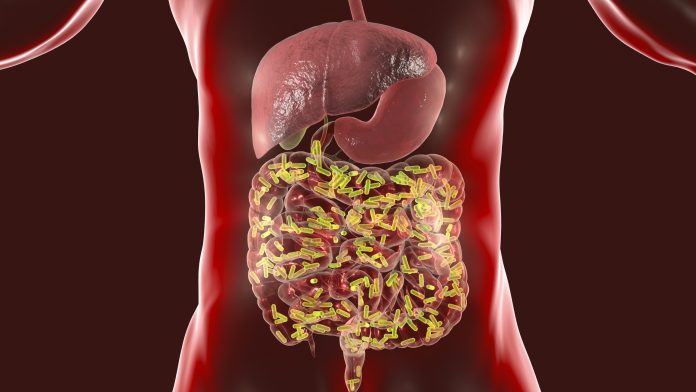
The gut microbiome long has been linked to health as well as the incidence and mortality of a range of diseases. It is also one of the systems in the body most able to be influenced by environmental and social exposures. Now, a multisite research effort from investigators at Washington University, Penn State, and Vanderbilt University has found that gut microbiome variation associated with race and ethnicity emerge by three months of age. The researchers’ findings were published yesterday in the journal PLoS Biology.
While there is no identified genetic or biological basis for it, gut microbiome diversity correlates with self-reported race and ethnicity. Taking this fact into account, some scientists believe that race and ethnicity are proxies for inequitable exposure to social and environmental determinants of health.
“The differences that we see are not present at birth, or even shortly after,” said the study’s first author Elizabeth Mallott, assistant professor of biology in Arts & Sciences at Washington University. “Only two of the 82 microbes that differ along the lines of either race or ethnicity are microbes that are maternally transmitted. The vast majority are all microbes that we acquire from the environment.”
Previous research efforts have shown the difference in the microbiome based on race and ethnicity are influenced by environmental and social factors. In the U.S., there are notable healthcare disparities related to a variety of socioeconomic factors that include, culture, diet and access to food; access to healthcare and education; interactions with the built environment; and environmental pollutants.
“Our results highlight the impetus to increase the diversity of individuals included in studies in the microbiome sciences and support the call for studies investigating how structural racism and other structural inequities affect microbiome variation and health,” the authors write.
For this research, Mallott and colleagues analyzed data from 2,756 gut microbiome samples from 729 U.S. children between birth and 12 years of age from eight previous studies. The results of their analysis showed that race and ethnicity account for small, but statistically significant, proportions of the variation in gut microbiome composition.
The team also found that multiple bacteria groups were differentially abundant between self-reported racial and ethnic categories, several that have been previously identified as differentially abundant in adults. Of the 57 different bacteria types that varied in abundance between children differing self-identified racial categories, prior research showed the one-third of them (19) were differentially abundant between Black and White adults.
The investigators note that this research was focused on the timing of when these variations emerge in life, not whether any of the race- and ethnicity-related variation resulted in better or worse health. But the findings that these difference emerge so early in life could be important.
“A lot happens in the life of a child between three and nine months,” Mallott noted. “If kids are going to go into group day care settings, that’s usually when it starts. That’s also when we typically start introducing solids into children’s diets. There could be differences in how, when, and why different solid foods are introduced. Even outside of day care, beyond three months is when a child starts being integrated into their communities.”
Early life experiences can have an impact on a person throughout their lifetime and can contribute to health disparities. The development and composition of the gut microbiome has an influence on immune system development, allergic and autoimmune diseases, antibiotic resistance, and development of asthma, among others.
The study’s corresponding author, Seth Seth Bordenstein, director of the One Health Microbiome Center at The Penn State noted: “The analysis presented in this paper highlights that human microbiome studies have an urgent imperative to prioritize diversity and the social sciences in research from early life onward. We want to eventually translate diverse microbiome discoveries into shaping the future of health precision, policy, and equity across the diversity of all of us.”













